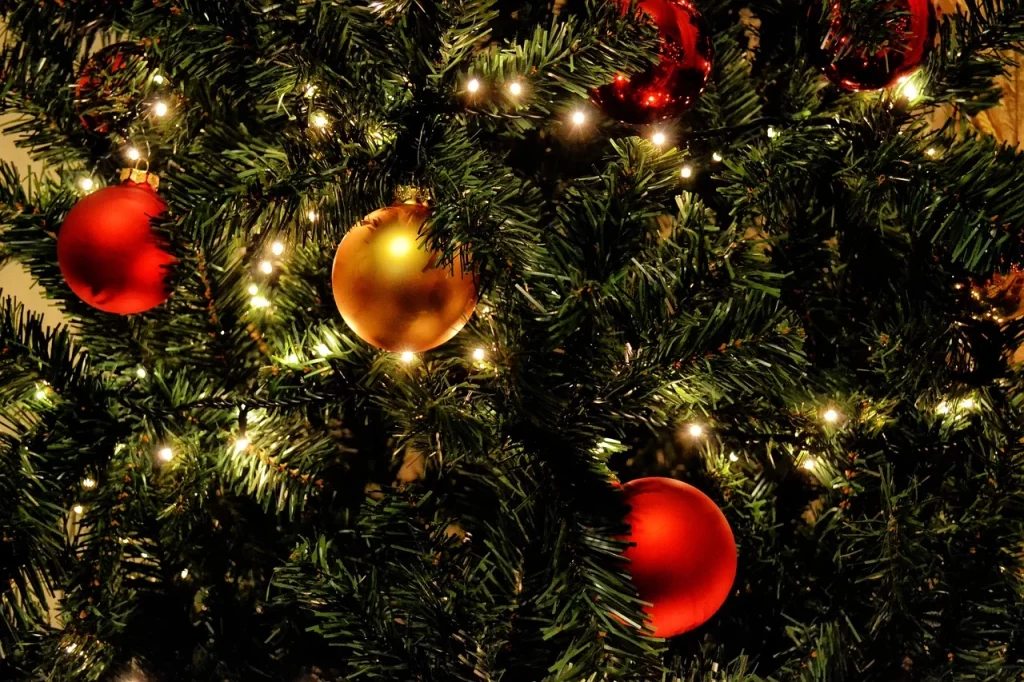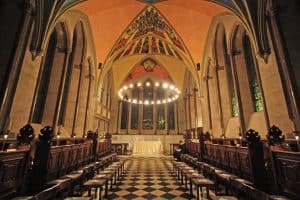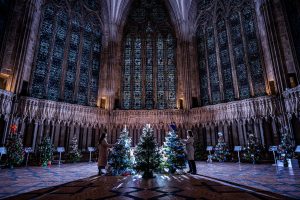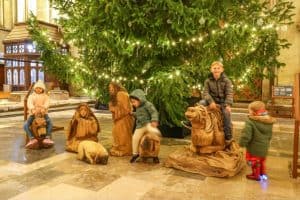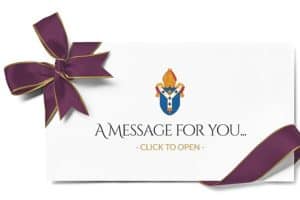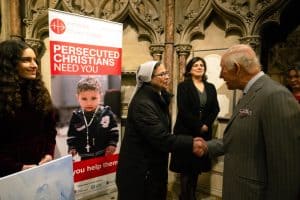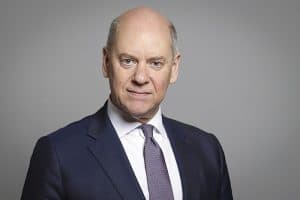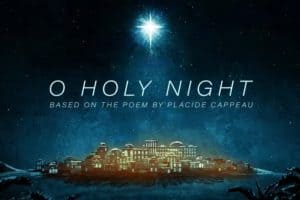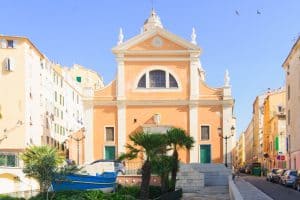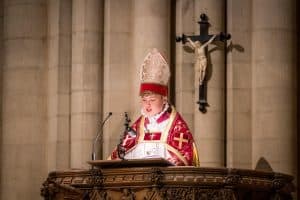By Catherine Pepinster
It is the must-see for Christmas television viewers, even more important than the Strictly Special or Call the Midwife. At 3pm on Christmas Day, whether tucking in to a mince pie, or just before serving a late turkey lunch, the nation takes a collective break and heads for the sofa to listen to the Queen.
And as that nation has become increasingly diverse and increasingly secular, the Queen has managed to retain her popularity yet head in the opposite direction, with messages that are increasingly overtly Christian in content. It is, according to religious and royal commentators, the big religious moment of the season — bigger even than going to church.
The Christmas message is not only a high point of the festive season for those listening but also for the monarch and her royal household, where it is known as the QXB (the Queen’s Christmas broadcast). For them it is a highlight of the year because it is her most personal commentary. The government is not involved. It is up to the Queen and her advisers to decide on the message’s content and, since the turn of the century, the broadcasts have followed a particular trajectory, highlighting her own personal faith.
The Queen’s first message was delivered live on the radio on Christmas Day 1952 from Sandringham House. George VI had died that February and the Queen followed in his footsteps and those of her grandfather, George V, in speaking to the nation. That Christmas she spoke of her forthcoming coronation in June 1953, asking for people to pray for her.
Since then, the Christmas broadcasts have undergone significant changes. The speech was first televised in 1957, and are no longer live, but have been recorded since 1960. They often include footage of trips abroad, particularly of visits to Commonwealth nations, which also broadcast the Christmas message. And while the early broadcasts were more overtly religious, they became more and more of an account of the Queen’s year, her trips abroad, family milestones such as weddings and christenings and comments about contemporary events. In 1966, for example, she spoke of the progress of women, and in 1972, she commented on Britain joining the European Economic Community in language that would make any Remainer proud.
But during this middle period of her reign, there were few explicit remarks about what her own faith and Christ meant to her but more general festive sentiments. Instead, she said, in 1963: “Much has been achieved but there is still much to do and on this day of reunions and festivities in the glow of Christmas, let us remember the many undernourished people, young and old, scattered throughout the world.” In 1970, she remarked: “That, very simply, is the message of Christmas — learning to be concerned about one another; to treat your neighbour as you would like him to treat you; and to care about the future of all life on earth.”
The changing point was 2000, which began with the Queen at midnight on 31 December 1999 singing Auld Lang Syne in the Millennium Dome with prime minister Tony Blair, his wife Cherie and new Labour ministers. The monarch looked somewhat uncomfortable at the enforced jollity as the clock struck midnight and a new century began.
Twelve months later the Queen decided to be explicit about what she thought the millennium was all about — and it wasn’t a Cool Britannia knees-up. She told the nation: “Christmas is the traditional, if not the actual, birthday of a man who was destined to change the course of our history. And today we are celebrating the fact that Jesus Christ was born 2,000 years ago; this is the true millennium anniversary.”
She spoke frankly about her own faith: “For me the teachings of Christ and my own personal accountability before God provide a framework in which I try to lead my life. I, like so many of you, have drawn great comfort in difficult times from Christ’s words and example.”
Some royal watchers think that it was George Carey, then Archbishop of Canterbury, who encouraged the Queen’s explicit message in 2000, while others say the Duke of Edinburgh suggested she speak more openly about her Christian beliefs. Ian Bradley, an academic expert on the royals and religion and the author of God Save the Queen: The Spiritual Heart of the Monarchy, has said that the Queen was persuaded to continue in this vein after Christmas 2000 because she had 25 times more letters than usual in response to that particular Christmas broadcast than any other.
Dr John Hall, the former Dean of Westminster who officiated at many services attended by the Queen at Westminster Abbey between 2006 and 2019, has noted the frankness with which she speaks nowadays at Christmas.
“The Queen is usually a somewhat reticent and shy person, so I’ve been very struck by her decision to speak up about her faith. We saw in the year 2000 how strongly she spoke and how personally, and that was a watershed. That approach seems to have continued”.
Dr Hall says the Queen’s faith focuses on human interaction with God, and “you can see her father George VI’s influence on her faith, still shining through what she says”.
Lord Williams, the theologian and former Archbishop of Canterbury, says the Queen has adapted her messages according to the times and so feels a religious input at Christmas is down to her, when fewer people go to church.
“In 1956, say, there would have been a lot more religious scaffolding around. The Queen must be aware of this shift, so in her message, she puts up some of the scaffolding poles herself,” he says. “She’s not aggressively evangelical but she doesn’t mince words either.”
The veteran royal reporter and columnist Richard Kay, who has been covering the beat for many decades for the Daily Mail, agrees that the most significant religious moment at Christmas for a large part of the nation is the Queen’s Christmas message.
“The Queen’s faith is central to her life, and while a lot of people nowadays don’t go to church, even at Christmas, they do listen to the Queen, and they hear what she has to say about her faith,” he says. “It’s still a hugely important part of Christmas and viewers are looking for something else, something different from politics at this time of year.”
For royal correspondents like Kay, the Queen’s Christmas message is always a key news story over the festive season. Royal watchers also take note of the Queen’s surroundings to divine other messages too, such as they way that family photos are arranged. For Christmas 2018, the photos included the newly married Prince Harry and Meghan Markle, but for Christmas 2019, there were photos indicating the line of succession: ones of George VI, the Prince of Wales and the Duchess of Cornwall, the Cambridges and their children — but no Harry, Meghan and their new baby, Archie.
During last year’s broadcast the Queen was filmed with just a photograph of her husband, Prince Philip, beside her. The couple had to isolate at Windsor together because of the Covid-19 lockdown, rather than spend the holiday with their extended family at Sandringham as was their tradition. The Queen commented on other people’s isolation, assuring them of her prayers and offered, despite the mourning of many for those who had died, a message of Christian hope.
This year her broadcast comes eight months after her own mourning for Prince Philip, who died in April, and many expect the broadcast will include a reference to her widowhood. The message, with its Christian content, will be heard of course by many people who do not share her faith.
Jonathan Romain, a reform rabbi, says that Jewish people and those of many faiths and none, will listen attentively “because she is our Queen, as much as anybody else’s. It is still a powerful message because she is a unifying force.”
While the royal commentary on the year is now a mix of observation on the year and an intimate advocacy of the Queen’s own faith, Dr Romain perceives it as a subtle vehicle for powerful messages. “She can hold a mirror up to society in a way that others can’t,” he says. “In 2000, she talked a lot about Christianity but she mentioned other faiths too. It caused a tremor; people noticed and appreciated it.”
On that occasion the Queen said: “Of course religion can be divisive, but the Bible, the Koran and the sacred texts of the Jews and Hindus, Buddhists and Sikhs are all sources of divine inspiration and practical guidance passed down through the generations.”
“It was an important acknowledgement that the country had changed,” Dr Romain says, “and that sort of recognition registers on the Richter scale.”
In 2004, the Queen returned at Christmas to the issue of diversity when she said: “Religion and culture are much in the news these days, usually as sources of difference and conflict, rather than for bringing people together. But the irony is that every religion has something to say about tolerance and respecting others.”
Again, there was an acknowledgment of the changing nature of Britain when she continued: “Most of us have learnt to acknowledge and respect the ways of other cultures and religions, but what matters even more is the way in which those from different backgrounds behave towards each other in everyday life.”
The nature of her messages and their Christian content has been noted beyond Britain as well. Some years ago, one Vatican official told me that the Queen and her leadership were highly regarded in Rome, saying that in the Vatican, she is seen as “the last Christian monarch”.
Catherine Pepinster is currently writing a book on the monarchy and religion, to be published next year by Hodder Faith

